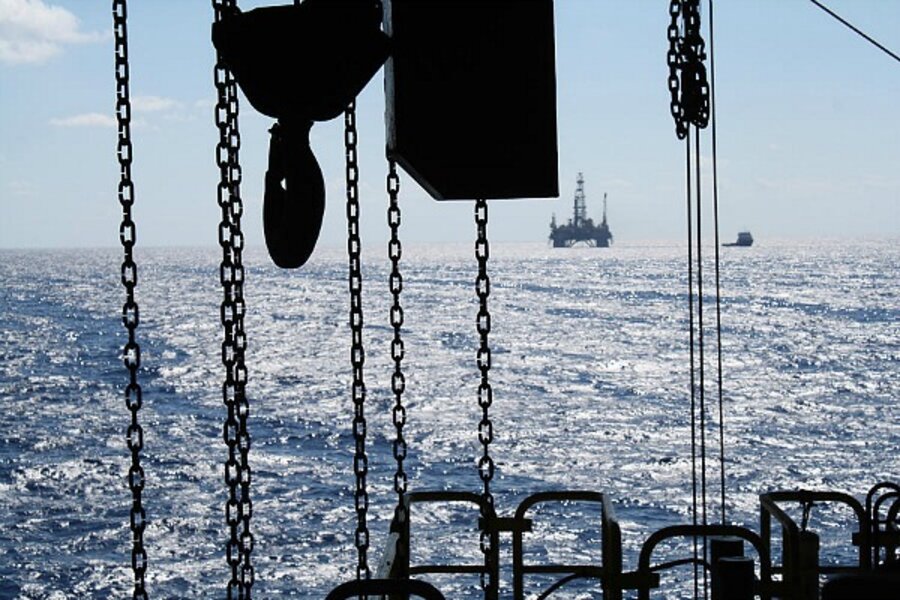Gulf’s $1.5 trillion oil wildcat play marks post-spill drilling 'renaissance'
Loading...
| ATLANTA
Deep below the Gulf of Mexico lies a structure called the Lower Tertiary, long thought by academics to be basically barren of oil. Today, oil company geologists claim the peculiar geologic dome holds a $1.5 trillion oil treasure.
Largely thanks to a risky play by a consortium of major oil companies in the mid-1990s, a Gulf region thought to be largely tapped out, it turns out, hadn’t even begun to give up its real spoils, leading to an oil boom that has turned the United States from a net gasoline importer to a net exporter for the first time in 50 years.
The 2010 Deepwater Horizon spill gave the nation pause as it emptied 4 million barrels of crude into the Gulf, which cost at least $40 billion to clean up. Questions remain whether ensuing inspection reforms and industry guidelines changes were enough to protect the region from another devastating spill.
But only three years after the deepwater disaster, the Gulf of Mexico is in a drilling “renaissance,” according to analysts, part of a remarkable energy transformation in the US that’s driving oil company profits and easing geopolitical realities, but, unfortunately for US drivers, hardly shaving any cents off the now-standardized $3.50-a-gallon at the pump.
“A series of recent finds in the ultra-deep has profoundly changed the thinking on US offshore geology, with 2013 seeing the Gulf of Mexico become one of the most promising frontier oil plays in the world and the fastest-growing offshore market,” writes Edward Klump in a Bloomberg News play-by-play exclusive of a tense 1995 meeting among oil executives in a Houston conference room.
A six-month drilling moratorium after the Macondo well blew up helped pose the fundamental question of how and why oil companies are drilling at depths where a blowout could occur. But the experience at the Macondo well upon which the Deepwater Horizon sat has also given drillers new insights and experiences in how to deal with future runaway wells in the deepest deeps.
But more critically, growing oil demand in nations like China – the main reason why US gas prices remain high, despite growing output – have driven wildcatters to make huge plays that are now paying off in about 40 percent of new holes – way above the 30 percent global average for new wells.
Test holes show that the so-called Shenandoah Field in the Lower Tertiary could hold nearly a billion barrels of oil, three times original estimates. Fields with names like Hadrian, Moccasin, and Mad Dog may hold an additional 5 billion barrels, or more. All in all, some 15 billion barrels may be summoned from the Lower Tertiary alone, with up to 48 billion barrels of undiscovered oil still out there.
“The deepwater Gulf of Mexico is witnessing an astonishing run of discoveries and hydrocarbon augmentation," Simmons & Co International said in a note to investors in July. "Quite a renaissance from the depths of Macondo.”
According to Bloomberg News, the run is being augmented by new technologies, including innovative seismic gear that can see more clearly through rock, and new rigs that can go so deep that the earth itself could boil water at the tip of the drill.
In two years, twice as many deepwater rigs – 60 – will be operating in the Gulf compared with just before the Deepwater Horizon disaster, and they could be pumping as much as 2 million barrels a day by 2020, according to Wood Mackenzie, Ltd., an industry research firm.
In July, the Senate Energy and Natural Resources Committee grilled oil executives about the question on most Americans’ minds: If the US output is so hot, why aren’t gas prices lower, especially given that US demand is off by 8 percent since the 2008, largely thanks to fewer driving miles and cleaner cars.
The main reason is that oil is a global market, and US demand and output are offset by consumption in oil-hungry nations like China. Refinery shutdowns and capacity have also played a role in higher prices.
Nevertheless, the increase in US production is ultimately helping to push down global prices, Adam Sieminski, director of the Energy Information Administration (EIA), an independent government agency, told the Senate in July.
While the US is now a net gasoline exporter, the nation still imports 40 percent of its crude, though that’s down from 60 percent just a few years ago.
Drilling supporters say the boom in Gulf oil has profound national security implications. Moreover, so-called US energy independence, once thought to be a pie-in-the-sky concept, has suddenly come to be seen as possible. Even getting imports down to 30 percent would be like the US buying “an insurance policy for the economy” since it would protect consumers from geopolitical vagaries in the global crude market, Jay Hakes, the former EIA head, told Congress.
Envirommentalists, meanwhile, bemoan the boom in the Gulf, saying it’s against the country’s ultimate, and long-term, interests.
“Recent trends in US energy consumption and production suggest we don't need to find more oil offshore,” Cindy Zipf, director of Clean Ocean Action, Inc., in Sandy Hook, N.J., wrote in The Wall Street Journal this summer. “Our investment dollars and energies are better spent on renewable energy, conservation and efficiencies such as improved mass transit, smart grids and clean-emission vehicles – an approach that creates jobs, doesn't damage the environment and addresses fossil-fuel-driven climate change.”








